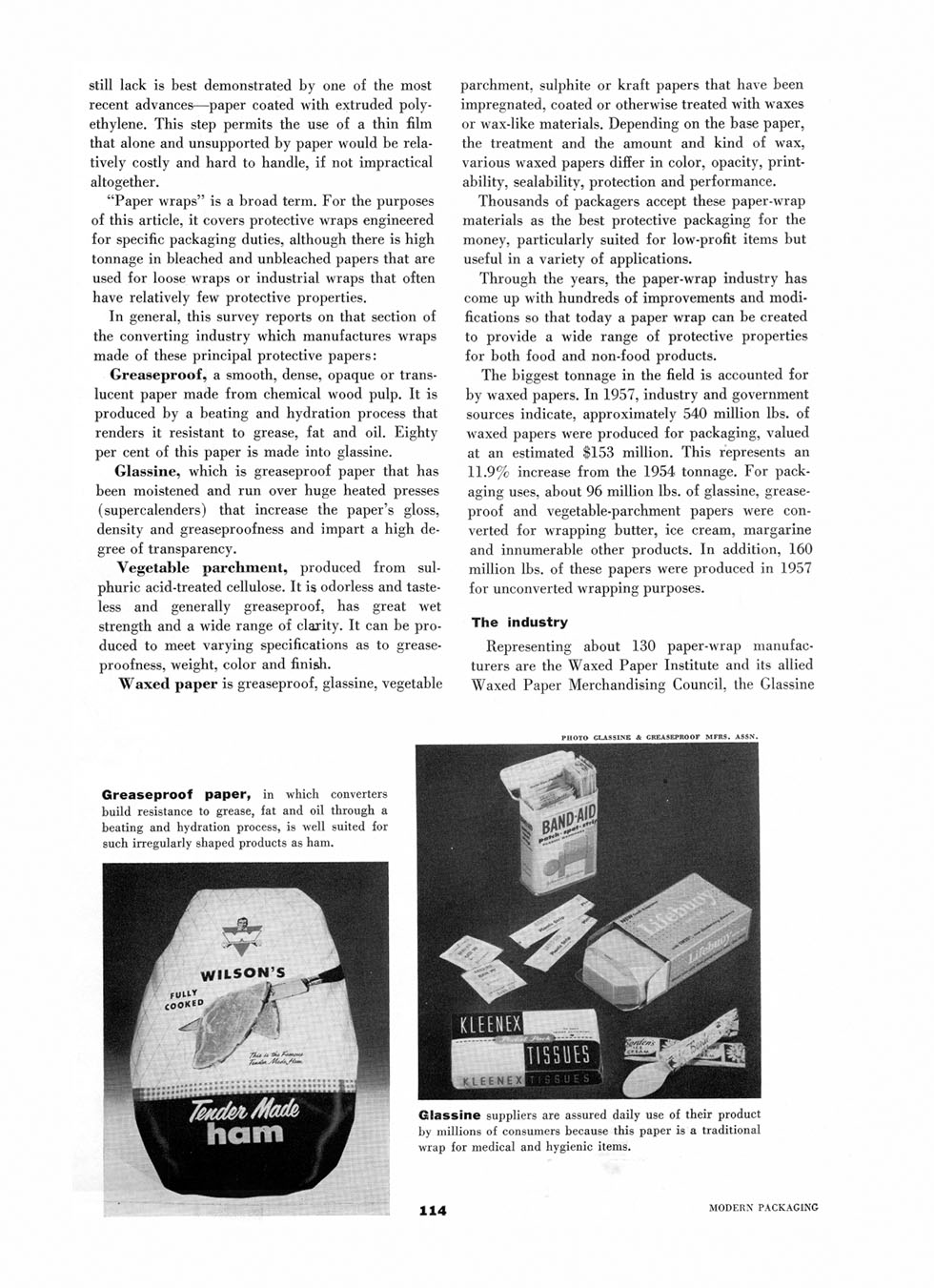


still lack is best demonstrated by one of the most recent advance-”paper coated with extruded polyethylene. This step permits the use of a thin film that alone and unsupported by paper would be relatively costly and hard to handle, if not impractical altogether.
"Paper wrap-¯ is a broad term. For the purposes of this article, it covers protective wraps engineered for specific packaging duties, although there is high tonnage in bleached and unbleached papers that are used for loose wraps or industrial wraps that often have relatively few protective properties.
In general, this survey reports on that section of the converting industry which manufactures wraps made of these principal protective papers:
Greaseproof, a smooth, dense, opaque or translucent paper made from chemical wood pulp. It is produced by a beating and hydration process that renders it resistant to grease, fat and oil. Eighty per cent of this paper is made into glassine.
Glassine, which is greaseproof paper that has been moistened and run over huge heated presses (supercalenders) that increase the paper's gloss, density and greaseproofness and impart a high degree of transparency.
Vegetable parchment, produced from sulphuric acid-treated cellulose. It is odorless and tasteless and generally greaseproof, has great wet strength and a wide range of claxity. It can be produced to meet varying specifications as to greaseproofness, weight, color and finish.
Waxed paper is greaseproof, glassine, vegetable
parchment, sulphite or kraft papers that have been impregnated, coated or otherwise treated with waxes or wax-like materials. Depending on the base paper, the treatment and the amount and kind of wax, various waxed papers differ in color, opacity, print-ability, sealability, protection and performance.
Thousands of packagers accept these paper-wrap materials as the best protective packaging for the money, particularly suited for low-profit items but useful in a variety of applications.
Through the years, the paper-wrap industry has come up with hundreds of improvements and modifications so that today a paper wrap can be created to provide a wide range of protective properties for both food and non-food products.
The biggest tonnage in the field is accounted for by waxed papers. In 1957, industry and government sources indicate, approximately 540 million lbs. of waxed papers were produced for packaging, valued at an estimated $153 million. This represents an 11.9% increase from the 1954 tonnage. For packaging uses, about 96 million lbs. of glassine, greaseproof and vegetable-parchment papers were converted for wrapping butter, ice cream, margarine and innumerable other products. In addition, 160 million lbs. of these papers were produced in 1957 for unconverted wrapping purposes.
The industry
Representing about 130 paper-wrap manufacturers are the Waxed Paper Institute and its allied Waxed Paper Merchandising Council, the Glassine
Greaseproof paper, in which converters build resistance to grease, fat and oil through a beating and hydration process, is well suited for such irregularly shaped products as ham.
PHOTO GLASSINE & GREASEPROOF MFRS. ASSN.
Glassine suppliers are assured daily use of their product by millions of consumers because this paper is a traditional wrap for medical and hygienic items.